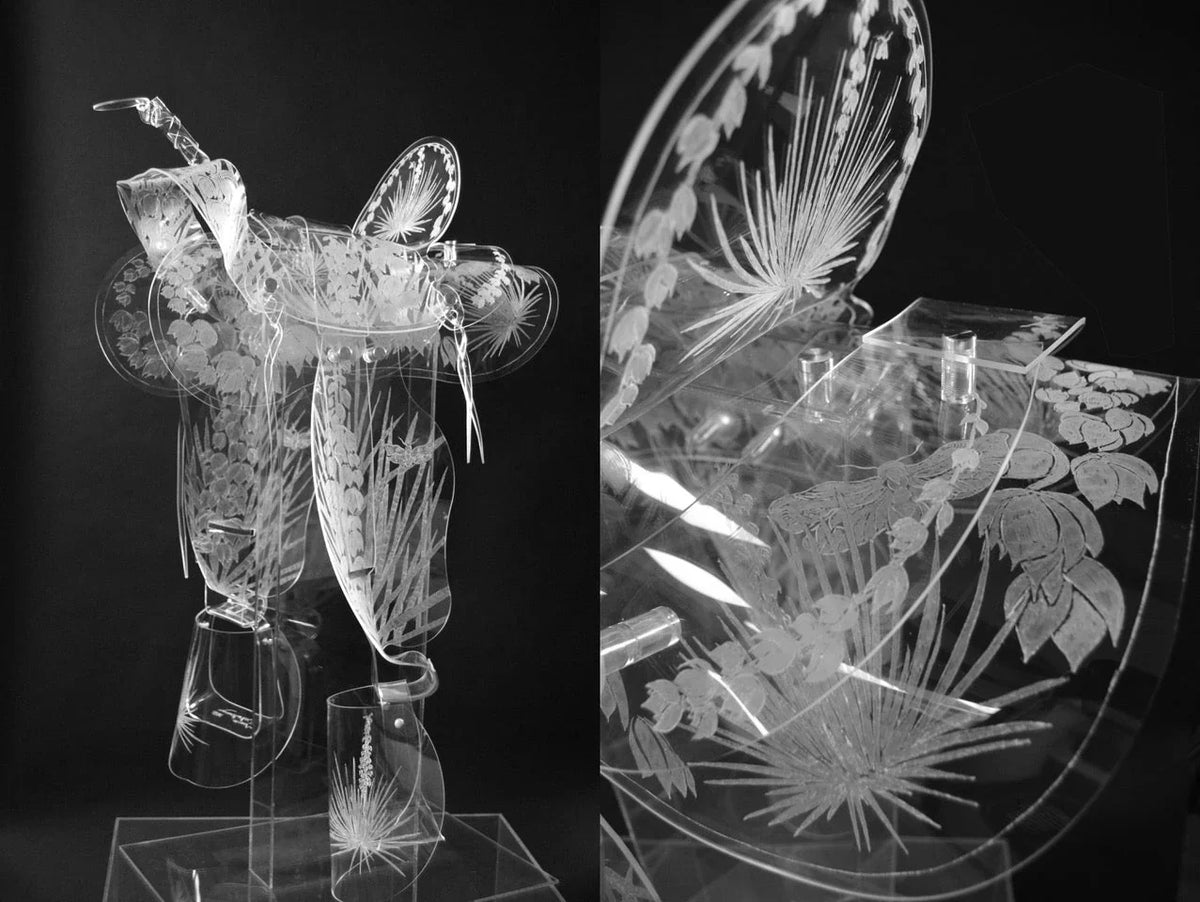
Making Fine Art with Plexiglass
|
Time to read 3 min
|
Time to read 3 min
In the heart of Colorado, artist Maeve Eichelberger has found an innovative way to capture the essence of the American West through her unique 3-dimensional art. Using plexiglass as her primary medium, Eichelberger bridges the gap between the contemporary world and the iconic appeal of the West, creating works both nostalgic and groundbreaking.
Plexiglass, or acrylic, has a rich history in the art world. Invented in the 1930s and further developed during World War II, this thermoplastic material quickly became a favorite among artists in the 1950s and 60s for its transparency, malleability, and futuristic appeal. Pioneers like Naum Gabo, Anish Kapoor, Philip Guston, and Claus Oldenburg experimented with plexiglass, creating sculptures that signaled the innovations of the space age.
Today, while many artists use plexiglass as a substrate for paintings or geometric sculptures, Eichelberger stands out for her unique approach. She shapes the material into recognizable forms, creating saddle-like sculptures that combine the familiar imagery of a tack room with the vibrancy of pop art. Her works are a testament to her Colorado roots, inspired by the nostalgia of growing up on a ranch and the everpresent saddles, blankets, and leather.
Eichelberger's creative process is as multifaceted as her finished plexiglass pieces. She begins by photographing various themes, man-made and natural. These images are juxtaposed based on fundamental design elements such as line, pattern, and form. Finally, compositions are digitally translated, printed on plexiglass, and meticulously cut into geometric shapes before being assembled into one-of-a-kind 3-D works.
The use of fluorescent colors and her technique of combining layers of plexiglass to create new hues add another dimension to her work. The result is a vibrant combination of crayon box colors, photographs, and etchings, created by hand or laser, that form layers of shapes and textures. These layers overlap and shift as the viewer moves around the saddles, offering a constantly changing perspective. Her art invites viewers to engage in a deliberate and contemplative manner.
“When we look at anything, a landscape our eye can see the foreground, middle, and background and the peripheral. Your eye and your brain connect them. My work ends up being this sequential element seen at the moment. Still, I create a different interpretation by highlighting or focusing on an often more abstracted, emphasized, brilliant, or vibrant element that seems exceptionally more important to me than it did when I captured it.”
This desire to challenge perceptions extends to how people see and embrace the West. Eichelberger's work incorporates inspiration from the flora she encounters while fly fishing or hiking, showcasing both native and invasive species that are changing the landscape. By highlighting these often-overlooked elements, she creates a different interpretation of the Western landscape, emphasizing elements that feel exceptionally important to her.
In Eichelberger's world, the American West is not just a sweeping landscape, but a tapestry of experiences, familiar and unexpected. Through her innovative plexiglass sculptures, she offers a fresh and engaging interpretation of this iconic region, inviting viewers to immerse themselves in the multiple layers of life that define the character of the West.
“I’m terrible at slowing down. We are so quick to swipe and scroll. I want people to be engaged in a different way. I want to challenge perception, the material, and the viewer.”
By combining the transparency and durability of plexiglass with her unique artistic vision, Eichelberger has created a body of work that honors the past while looking firmly toward the future. Her art serves as a bridge between the traditional imagery of the American West and the contemporary art world, challenging viewers to see this familiar landscape in a new light. In doing so, she not only pays homage to her Colorado roots but also pushes the boundaries of what plexiglass art can be, of what art can be.